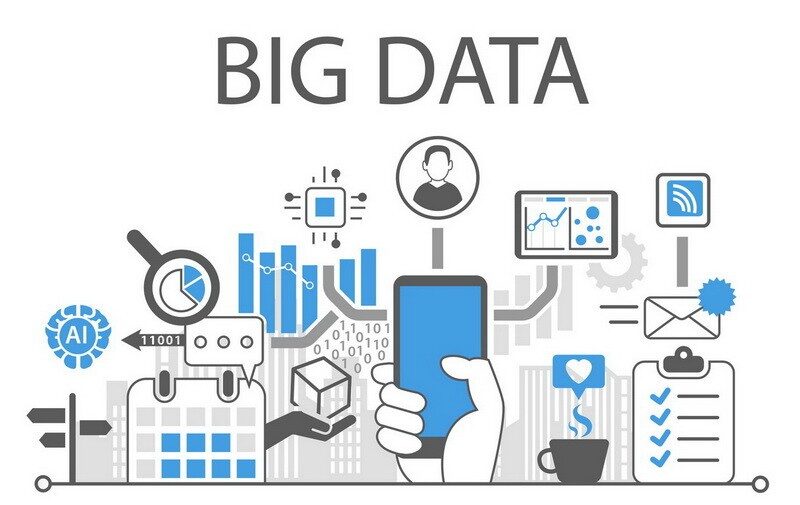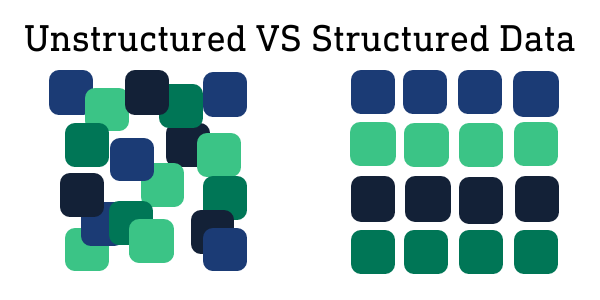This article was published as part of the Data Science Blogathon
We produce a large amount of data every day, whether we know it or not. Every click on the Internet, every transactionThe "transaction" refers to the process by which an exchange of goods takes place, services or money between two or more parties. This concept is fundamental in the economic and legal field, since it involves mutual agreement and consideration of specific terms. Transactions can be formal, as contracts, or informal, and are essential for the functioning of markets and businesses.... Bank, every video we see on YouTube, every email we send, each like on our Instagram post is data for tech companies.
With such a huge amount of data being collected, it only makes sense for companies to use this data to better understand their customers. This is why the popularity of data science has multiplied in recent years.
Structured data vs. unstructured data
Before delving into the nuances of Big Data, it is important to understand the different types of data, namely, structured and unstructured data.
Structured data includes quantitative data that is stored in an organized way. Consists of numeric and text data. It is easy to analyze and process structured data. As usual, is stored in a databaseA database is an organized set of information that allows you to store, Manage and retrieve data efficiently. Used in various applications, from enterprise systems to online platforms, Databases can be relational or non-relational. Proper design is critical to optimizing performance and ensuring information integrity, thus facilitating informed decision-making in different contexts.... relational and can be queried using structured query language (SQL).
Unstructured data includes qualitative data that lacks a predefined structure and can come in a variety of formats (images, mp3 files, wav files, etc.). Unstructured data is said to lack “structure”. It is stored in a non-relational database and can be queried using NoSQL.
There may also be semi-structured data, that lie between structured and unstructured data.
What is Big Data?
Big data is exactly what its name suggests, a “big” amount of data. Big Data means a data set that is large in terms of volume and more complex. Due to the large volume and increased complexity of Big Data, traditional data processing software can't handle it. Big Data simply means data sets that contain a large amount of diverse data, both structured and unstructured.
Big Data enables companies to address the problems they face in their business and solve these problems effectively using Big Data Analytics. Companies are trying to identify patterns and extract insights from this sea of data so that they can act to solve the problems at hand..
Although companies have been collecting a large amount of data for decades, The concept of Big Data only gained popularity in the early mid-1990s. 2000. Corporations realized the amount of data being collected on a daily basis and the importance of using this data effectively.
Which are the 5 V de Big Data?
Doug Laney introduced this concept of 3 V de Big Data, namely. Volume, variety and speed.
Volume refers to the amount of data that is collected. Data can be structured or unstructured.
Speed refers to the speed at which data is entered.
Variety refers to the different types of data (type of data, formats, etc.) that enter for analysis.
In recent years, have also arisen 2 Additional V data: value and truthfulness.
Value refers to the usefulness of the data collected.
Veracity refers to the quality of data that comes from different sources.
Real world applications
Big Data Helps Corporations Make Better, Faster Decisions, because they have more information available to solve problems and they have more data to test their hypotheses.
Customer experience is an important field that has been revolutionized with the arrival of Big Data. Companies are collecting more data than ever about their customers and their preferences. This data is used in a positive way, providing personalized recommendations and offers to customers, who are more than happy to allow companies to collect this data in exchange for personalized services. The recommendations you receive on Netflix or Amazon / Flipkart are a Big Data gift!
Machine learning is another field that has benefited greatly from the growing popularity of Big Data. More data means we have larger data sets to train our ML models, and a more trained model (generally) results in better performance. What's more, with the help of Machine Learning, now we can automate tasks that were previously performed manually, all thanks to Big Data.
Demand forecast has become more accurate with more and more data collected on customer purchases. This helps companies create forecasting models that help them forecast future demand and scale production accordingly.. Help companies, especially those in manufacturing businesses, reduce the cost of storing unsold inventory in warehouses.
Big data is also widely used in applications such as product development and fraud detection..
How to store and process Big Data?
The volume and speed of big data can be enormous, making it almost impossible to store them in traditional data warehouses. Although some of the confidential information may be stored on the company's premises, for most data, businesses should opt for cloud or Hadoop storage.
Cloud storage allows companies to store their data on the internet with the help of a cloud service provider (as Amazon Web Services, Microsoft Azure o Google Cloud Platform) which assumes the responsibility of managing and storing the data. Data can be accessed quickly and easily with an API.
Hadoop also does the same, giving you the ability to store and process large amounts of data at once. Hadoop is an open source software framework and it's free. Allows users to process large data sets on groups of computers.
Challenges
1. Data growth
Managing data sets containing terabytes of information can be a major challenge for businesses. A measureThe "measure" it is a fundamental concept in various disciplines, which refers to the process of quantifying characteristics or magnitudes of objects, phenomena or situations. In mathematics, Used to determine lengths, Areas and volumes, while in social sciences it can refer to the evaluation of qualitative and quantitative variables. Measurement accuracy is crucial to obtain reliable and valid results in any research or practical application.... that the datasets increase in size, storing them not only becomes a challenge, it also becomes a costly affair for companies.
To get over this, companies are now starting to pay attention to data compression and deduplication. Data compression reduces the number of bits required by the data, which translates into a reduction in space consumption. Data deduplication is the process of ensuring that duplicate and unwanted data does not reside in our database.
2. Data security
Data security often has a fairly low priority in the Big Data workflow, which can sometimes backfire. With such a large amount of data being collected, security challenges are likely to arise sooner or later.
The extraction of confidential information, the generation of false data and the lack of cryptographic protection (encryption) are some of the challenges that companies face when trying to adopt Big Data techniques.
Businesses must understand the importance of data security and prioritize it. To help them, there are professionals Big Data Consultants today, that helps companies move from traditional data storage and analysis methods to Big Data.
3. Data integration
Data comes from many different sources (social media apps, emails, customer verification documents, survey forms, etc.). It often becomes a major operational challenge for companies to combine and reconcile all this data.
There are several Big Data solution providers that offer ETL (Extract, To transform, Load) and data integration solutions for companies that are trying to overcome data integration problems. There are also several APIs that have already been created to address issues related to data integration..
The future of Big Data
The volume of data produced every day is continually increasing, with increasing digitization. More and more companies are starting to move from traditional data storage and analysis methods to cloud solutions.. Businesses are beginning to realize the importance of data. All of this implies one thing: The future of big data looks promising! It will change the way businesses operate and decisions are made.
EndNote
In this article, we analyze what we understand by Big Data, structured and unstructured data, some real world Big Data applications and how we can store and process Big Data using cloud and Hadoop platforms.
The author of this article is Vishesh Arora. You can connect with me at LinkedIn.
The media shown in this article is not the property of DataPeaker and is used at the author's discretion.











